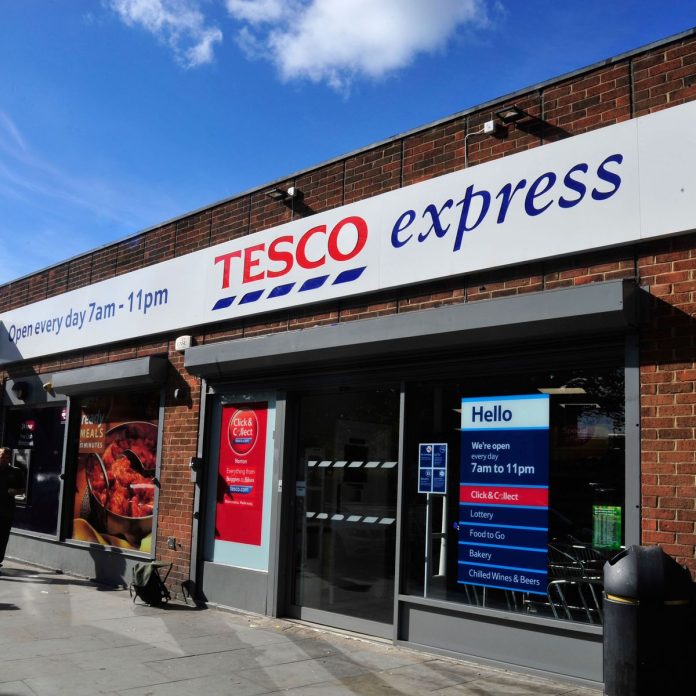Shoppers who regularly buy groceries from local supermarket convenience stores instead of bigger supermarkets are likely to pay hundreds of pounds more over the course of a year, new research from Which? has found.
They analysed the prices of own-label and branded items at the two largest traditional supermarket convenience chains, Tesco Express and Sainsbury’s Local, and compared the costs with the same items at their larger equivalents or bought online.
The results highlight the eye-watering costs people face if they live in an area where larger stores are scarce or online delivery access is poor.
Which?’s research found that shoppers buying the same 75 items at Tesco Express, including Anchor Spreadable Butter, a Hovis white bread loaf and own-brand milk would be spending an extra £15.73 on average a week than those shopping online or at a larger Tesco store – £817.91 more over the course of a year.
At Sainsbury’s, Which? compared the prices of 69 groceries including Heinz tomato soup, McVities biscuits and Birds Eye Potato Waffles and found that shoppers using Sainsbury’s Local instead of shopping online or going to a larger store would have spent an extra £477.93 over the year.
While supermarket prices fluctuate all the time, Which?’s analysis revealed steep mark ups at both Sainsbury’s Local and Tesco Express stores on individual items.
In the worst case included in Which?’s research, own-label sweet potatoes were 95p on average when bought online or at a big Tesco but £1.30 on average at Tesco Express – a difference of 37 per cent.
Which? also found Mr Kipling Bakewell slices were £1.27 online or at larger stores, but cost £1.62 at Tesco Express – 28 per cent more.
At Sainsbury’s the worst offender was Heinz Cream Of Tomato soup, which was £1.15 online and at the bigger store but £1.37 at Sainsbury’s Local – a 19 per cent mark-up.
Similarly Birds Eye Potato Waffles were £1.71 at Sainsbury’s, both online and at bigger stores, but £2.01 at Sainsbury’s Local.
Not all items were more expensive at convenience stores compared to big supermarkets. Anchor Spreadable Butter Tub (500g), Colgate Total Original Toothpaste (125ml) and Magnum Almond Ice Cream (4 pack) were all 3 per cent cheaper on average at Sainsbury’s Local compared to larger Sainsbury’s stores and online. Tesco’s own-label unsalted butter block (250g) was 2 per cent cheaper on average at Tesco Express than at larger Tesco stores and online.
The large differences in price show how challenging food shopping can be, especially for people who are more vulnerable to food insecurity, don’t shop online, or don’t have easy access to a larger supermarket.
In November, Which? published the Priority Places for Food Index, developed with the Consumer Data Research Centre at the University of Leeds, which showed that seven in 10 UK Parliamentary constituencies have at least one area in need of urgent help accessing affordable food – meaning that people living in these areas are most at risk in the cost of food crisis.
While supermarket convenience stores offer a local lifeline for many, or are an easy alternative when looking to avoid doing a big shop, Which?’s research shows that at a time when grocery prices are soaring, many shoppers face higher costs than they would do if they went to a larger supermarket or shopped online.
Which? is campaigning for supermarkets to do more to support consumers through the current cost of living crisis in a range of ways. This includes ensuring that affordable ranges are available, for example by offering a range of budget lines for affordable essential items that enable a healthy diet across their stores including convenience stores and particularly in locations where people most need support.
As well as ensuring budget range availability in all stores, Which? is calling for supermarkets to make unit pricing clearer, more legible and consistent so that people can more easily understand the best deals. Offering targeted support by focussing their marketing budgets and promotions to support those struggling, with offers, vouchers and loyalty card benefits targeted at the places and households where people are most in need.
As part of its Affordable Food For All campaign, Which? has published a 10-point plan of steps supermarkets can take across these three key areas to help ensure affordable food is available to everyone who needs it.
Sue Davies, Which? Head of Food Policy, said
“Convenience stores offer a local lifeline for some shoppers, but Which? research shows shopping at a supermarket convenience shop rather than a bigger store comes at a cost – at a time when soaring grocery prices are putting huge pressure on household budgets.
“We know the big supermarkets have the ability to take action and make a real difference to people struggling through the worst cost of living crisis in decades. That’s why we’re calling on them to ensure everyone has easy access to basic, affordable food lines at a store near them, can easily compare the price of products to get the best value and that promotions are targeted at supporting people most in need.”







